
New York loosens cannabis safety standards—Here’s why
Sounds gross, but it’s probably going to be OK. Leafly spoke to experts from across the industry to weight the pros and cons.
New York wants to get its adult-use market going so badly, it’s cutting a few safety corners to get there.
On Wednesday, news broke that New Yorker smokers could be exposed to cannabis that has potentially harmful levels of mold, mildew, and yeast. State regulators dropped the so-called pass/fail limits on total microbiological contamination after some marijuana growers claimed last week that most of their supply would not pass testing.
With pressure mounting to launch New York’s legal market by the end of the year, regulators dropped testing standards not because mold is safe to smoke and inhale, but because growers kept failing the stringent tests.
On Tuesday, Nov. 1, the New York Office of Cannabis Management emailed licensed growers to state: “the Office has updated its Laboratory Testing Limits document to remove the pass/fall limits associated with the Total Viable Aerobic Bacteria Count and Total Yeast and Mold Count for unextracted cannabis products (e.g. cannabis flower, pre-roll, etc).”
Previously, regulators had set yeast and mold limits at “less than 10,000 colony-forming units (CFU) per gram of flower, or 1,000 CFU per gram of extract.” Now, growers will have to test their products and share the CFU levels, but are ultimately at their own discretion to choose if their products are safe enough for market.
Basically, weed in New York can have more than 10,000 colony-forming units of yeast or mold on it, and growers can sell it to stores, which can sell it to customers. Regulators essentially told growers to do their best, just don’t hurt anybody. Leaving retailers and consumers to make their own calls as to whether the weed they’re buying has unsafe CFU levels.
“It’s the responsibility of the licensee to consider these tests and any impact to the stability and expiration dating of the product, as well as any risk to the health of consumers,” New York regulators told Leafly.
Keep reading to hear what cannabis operators, regulators, and experts had to say about New York’s decision to allow moldy weed.
New York will still test weed for the bad stuff
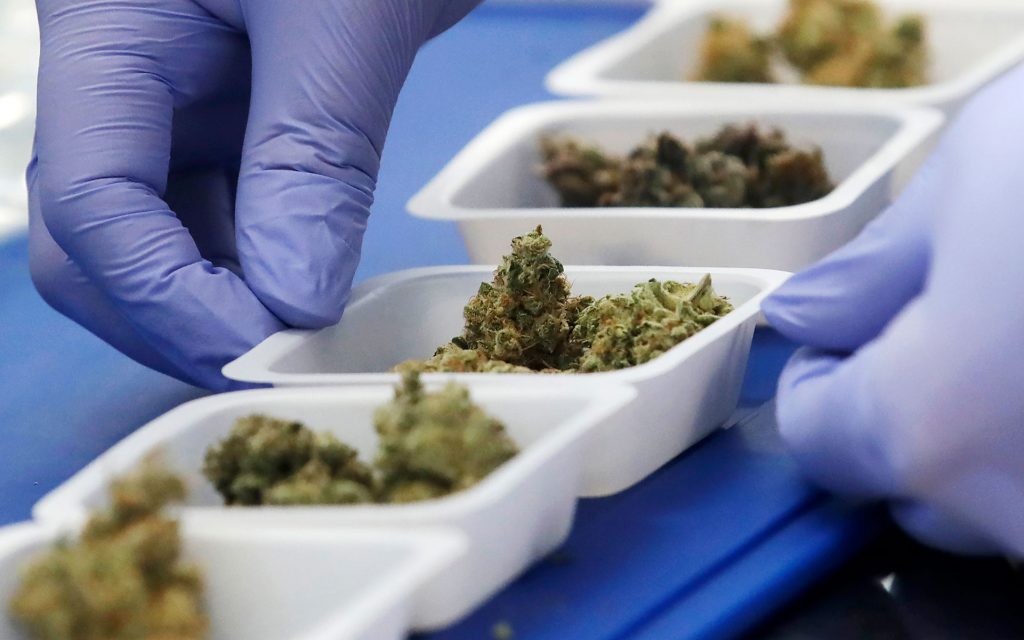
New York will still test for specific pathogens like aspergillus, e. Coli, and salmonella, which is important. But growers can now sell weed that fails the “Total Viable Aerobic Bacteria Count and Total Yeast and Mold Count” limits.
According to lab CEO Josh Wurzer at SC Labs in California, these “total” mold counts are less sensitive, but failing the tests indicates a wide variety of contaminants is present on the bud.
“Again [New York labs] are looking for the No. 1 culprit for specific pathogens, but there’s also a ton of yeast, mold, or bacteria out there that can also make you sick that aren’t part of any of these tests. Total plate count tests give you an indication of how much mold is there. If there’s a lot, there’s probably something there that will make you sick.”
Josh Wurzer
Multiple states mandate so-called total plate count tests. They are: Connecticut, Massachusetts, Maine, and TK. Total plate count testing is also common in the American health food industry. The US Pharmacopeia advisory organization also recommends mold counts in cannabis products not exceed 10,000 CFU/g.
New York rules match some states but not others

For context, New York’s updated cannabis rules mirror California’s, which test for specific pathogens, but also do not require total plate count tests for products to hit the market. The majority of states have a 10,000 CFU threshold for total yeast and mold, according to Medicinal Genomics. Maryland, Michigan, and Florida have some of the highest acceptable yeast and mold limits, while Utah (1,000), Illinois (1,000), and Iowa (10) have among the lowest.
According to New York state regulators, cannabis flower cannot have any: Salmonella spp., Shiga toxin-producing E. coli, or Aspergillus flavus, A. fumigatus, A. niger, or A. terreus. One-gram samples must test “absent” for these known pathogens.
New York state cannabis labs also screen for mycotoxins, heavy metals, water, and visible contaminants like dirt and hair. Cannabis labs also test for THC potency, and pesticides, residual solvents, and (optionally) terpenes.
Across the nation, no state has fully cracked the code for mold and yeast testing regulations.
A process called irradiation is becoming increasingly popular. The practice of using radiation to kill mold and bacteria is common in Canada, and in food production. It’s also growing more popular in states with legal cannabis as research reveals that it can prevent life-threatening fungal infections for immunocompromised patients. Massachusetts lets cultivators and manufacturers remediate mold off of their cannabis both before and after testing. But if the product still can’t pass regulations, the batch must be tossed.
Is New York’s upcoming legal cannabis supply safe?
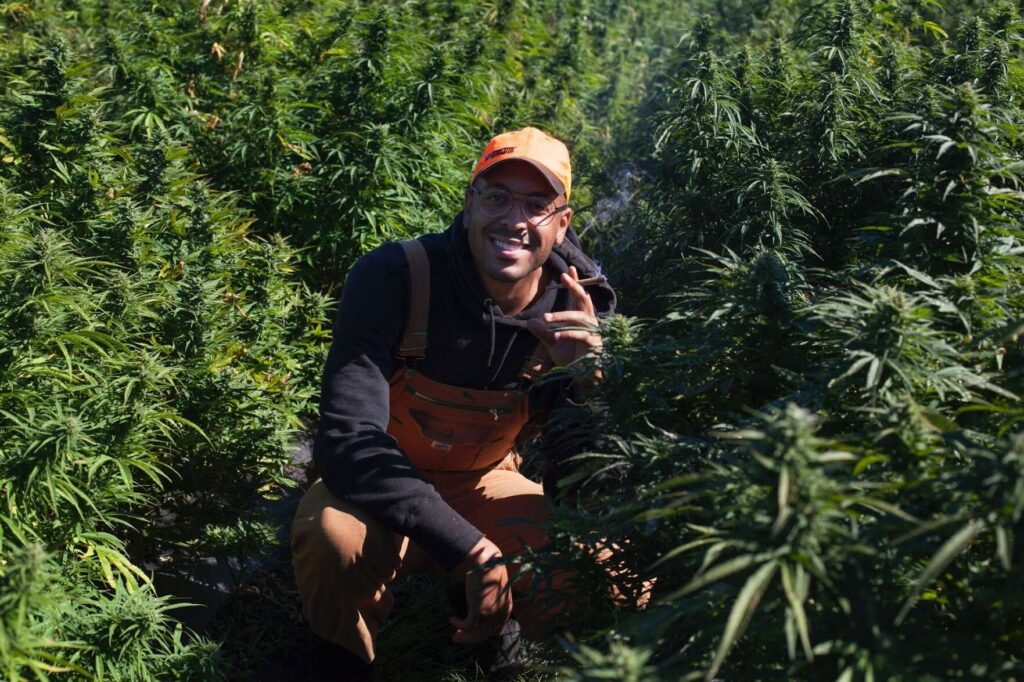
Yes, it’s safer than stuff from the illicit market, but maybe less safe than if the state had pass/fail limits for total microbiological contamination. So it’s buyer beware, especially if you are immuno-compromised.
“Yeah, I think it’s safe. Definitely way safer than stuff in the streets,” Wurzer said.
Again, California doesn’t do total plate tests, either. And New York still requires the total plate count test. They’re just going to allow growers to fail it, monitor the release, and adjust later.
“I don’t think it’s an immediate danger to consumer health and safety as long as New York monitors, and follows through with reinstating testing with pass/fail criteria,” Wurzer said.
“I get the idea of waiting and gathering data and making a data-driven decision on these action limits. I think it’s not (an) entirely unwise decision to pause pass/fail criteria, but continue to test and monitor.”
Josh Wurzer, SC Labs
Some operators are applauding the flexible regulations
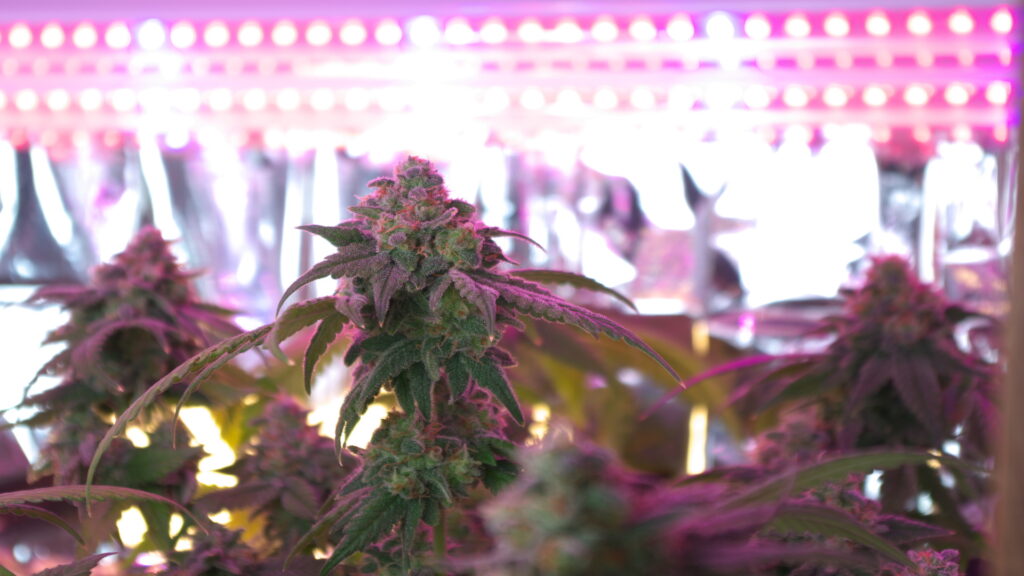
“You could eat a tomato anywhere in the country, and it would be less safe than the gram of cannabis you just ate in New York under the previous regulations,” said Siddarth Gupta, CEO and founder Flower House. Gupta thinks the OCM made the right choice in dropping mold testing limits.
Flower House is the largest licensed adult-use cultivator in New York state. Gupta said the previous testing requirements were “ridiculous,” and beyond what is necessary. He clarified however, “smoking mold is not OK,” but that regulators should trust operators to self-regulate.
Before Flower House, Gupta operated some California and Oregon’s largest grows and brands, including Natura in Sacramento and Pistil Point in Portland.
Katie Reiter, Flower Houses director of compliance agrees that New York made the right choice in dropping the mold and yeast regulations. “I think it’s pretty amazing that the OCM is putting this level of trust into the operators to get the product out to market and ensure that it is safe,” Reiter said. “We still have access to R&D testing. We still have knowledge to tap, to tell what product is safe, what is gonna be good for consumers, and what needs to be tossed. So we really can rest assured that there will be safe products available for consumers.”
Reiter feels that California has long had the nation’s best approach because regulators are not “afraid of the industry,” and “trusts the operators” to do the right thing. But Reiter already feels that “New York has surpassed California in terms of being a great partner” to the cannabis industry.
“I can’t believe how fast and how far New York has come in leading the industry with operator-friendly and, more importantly, consumer-friendly regulations. I am so excited to be working with the OCM because every time we hear from them, every time we receive guidance, there’s something in it that I haven’t seen before in other states. That really blows my mind in terms of forward-thinking regulation.”
Katie Reiter, director of compliance, Flower House
Gupta added that regulators have been “really understanding and practical about the challenges that we are facing as a state that does not have an existing medical infrastructure.” Gupta explained, “California, Oregon, and Washington, (had) lab testing long before adult-use launched—There was a lot of infrastructure in place, so it was really easy to transfer into adult use. But for New York, we don’t have a (long-standing) medical program, so it’s not the simplest thing… We’re gonna have to fix our mistakes as we go along.”
Is mold, mildew, and yeast on cannabis dangerous?
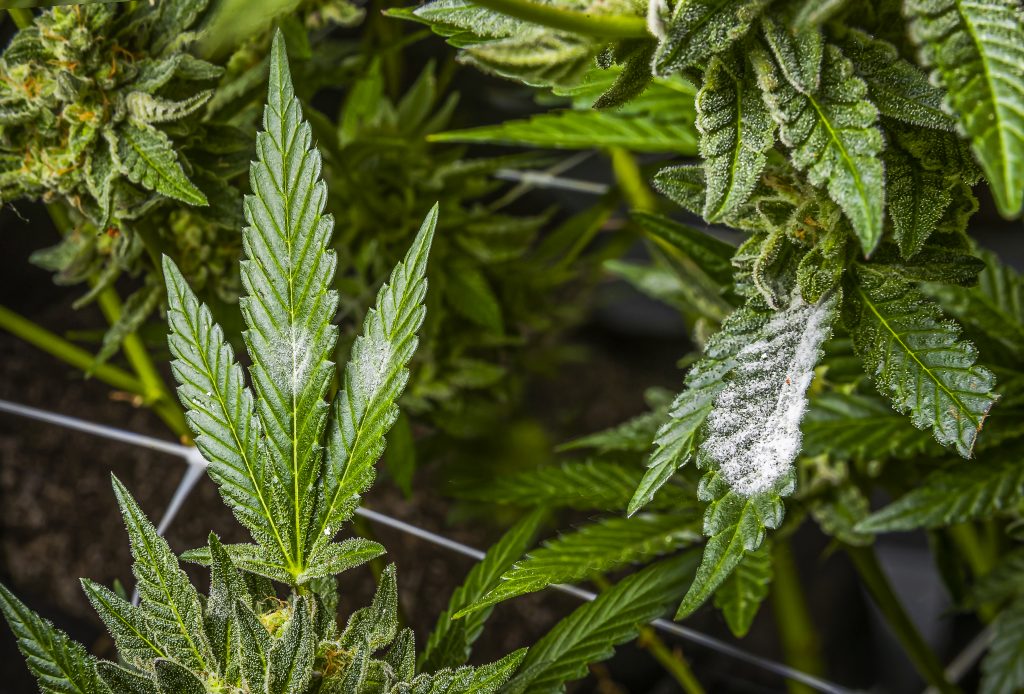
Microbiological contaminants on cannabis can hurt you. Legalization states commonly set low limits for inhaling flower tainted with mold, mildew, and yeast onto lung tissue. Lung tissue can be more sensitive to infection and damage than stomach lining, or the skin.
Cannabis mold, mildew and yeast have caused documented cases of lung illness. Symptoms of lung exposure to microbiological contaminants can include allergy-like symptoms, cold and flu-like symptoms, and cancers. Immune-compromised medical cannabis patients, like those on chemotherapy, must specifically avoid such contaminants.
Kim Stuck is an immunocompromised individual who is also a former cannabis regulator. Stuck served as the nation’s first cannabis regulator for a major metro area, overseeing Denver’s market before founding Allay Consulting to help canna-businesses avoid compliance pitfalls.
Stuck said the decision to drop mold regulations sets a dangerous precedent, both for consumers, and businesses that could be held liable for harm caused by contaminated products. She is not against the state providing wiggle room, or adjusting the levels so that crops don’t go to waste. But she said the choice to drop limits altogether is “kind of ridiculous.”
“I understand what they’re trying to do,” Stuck said of New York regulators. “I think that a lot of product does get thrown out (unnecessarily), but if you’re releasing a product that has a lot of mold and yeast on it, then you’re also running the risk of getting people sick… So I think that there needs to be some kind of testing unit standard.”
Stuck warned New York’s decision could also open regulators and the state to risk of liability, along with growers and retailers who choose to sell moldy products.
How can you check for mold, mildew, and yeast on cannabis?
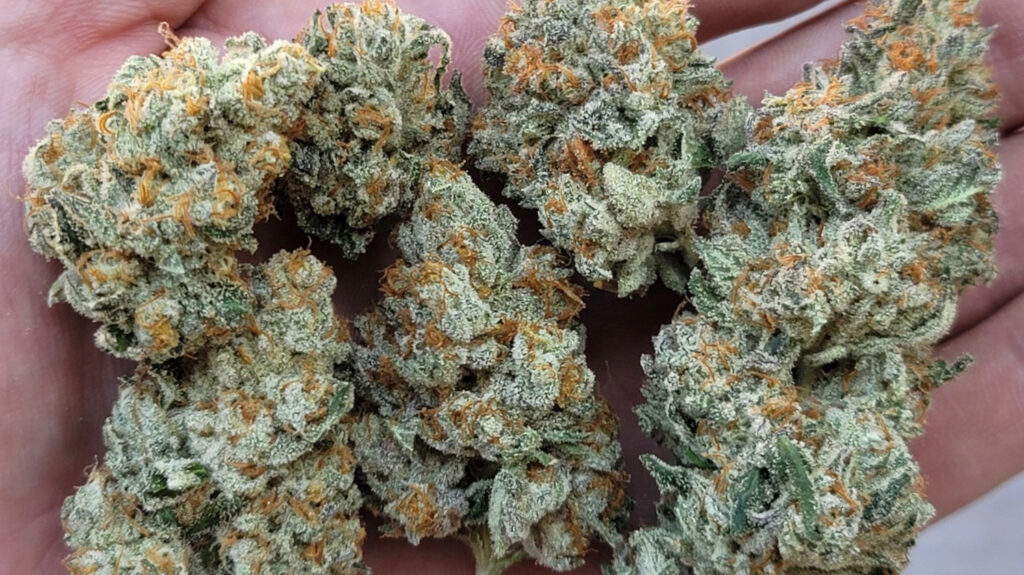
Ask for the test scores, and smoke only weed that passes stringent testing. If you can’t see the test scores, or it’s a product that failed, maybe choose a product that tests clean.
Beyond that, folks rely on their senses, or certifications like Good Agricultural and Collection Practices (GACP) stamp of approval.
“If it smells mildewy, it probably is,” Stuck advised. Stuck is currently battling breast cancer and said she only buys products from companies with GACP certifications from an accredited third party. New York’s CBD cultivators are already required to pass GACP regulations.
The most common weed-loving mold, botrytis, looks like mold you’ll find on rotting fruit like strawberries—a gray, spidery, fluffy spot or mass.
“If it’s visible, you definitely want to get rid of it, because there’s a lot there,” Wurzer told Leafly.
Mold spores are invisible to the naked eye. So don’t just cut off the moldy part of the bread and eat the rest. Toss the whole bud if even a part of its surface is visibly moldy. Mold-latent weed that fails a test for 10,000 CFUs might appear fine.
The human nose also evolved to detect pathogens. Does it smell moldy? If you suspect you smell mold on your weed, consider not consuming it.
Even if you kill the mold with heat (sterilization)—toxins produced by the mold can remain.
“I’m going through chemotherapy. I have to be very careful, because when you’re immunocompromised, those molds can hurt you a lot easier. And we’re talking about anybody like me, children who might be using, anybody pregnant that might be using, (and) anybody who’s elderly.”
Kim Stuck, former Colorado cannabis regulator
Stuck added that the elderly population is one of the biggest populations that uses cannabis. She feels that since we know their bodies can be more sensitive to mold, the industry should do its best to protect them.
“It’s not that they will smoke it and drop dead right away,” Stuck said of customers who are most at risk after consuming moldy weed. “It’s the long term effects. Like it will affect their lungs and cardiovascular system,” Stuck said. She’s seen hospital visits and deaths caused by mold during her time in Colorado and credits the state’s current threshold of 10,000 with keeping the market safe for all.
What is mold, mildew and yeast doing on cannabis?
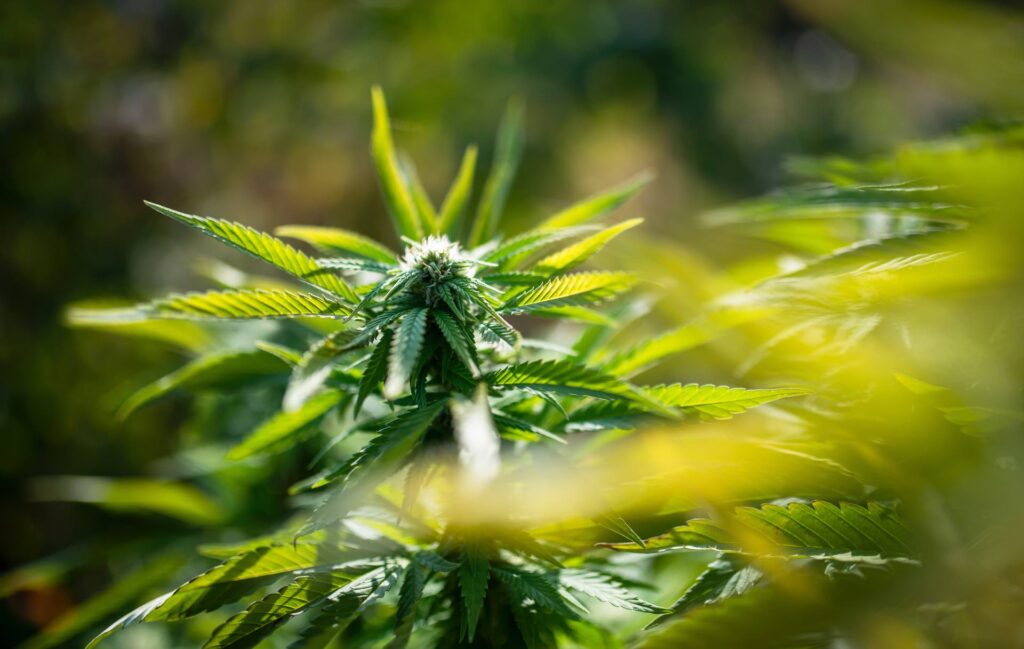
Everything on Earth is coated in a microbiome of molds, mildews, and yeasts. But high humidity in the grow room, or other plant stress can trigger a major infection by these contaminants.
Similarly, harvested weed is 80% water, and ripe for molding. Growers have to slowly and coolly air-dry cannabis to less than 15% water to get the bud out of the mold growth zone.
Sealed, wet cannabis also encourages bacterial growth. Producers usually package cannabis flower at less than 8% water. But Stuck points out that some products, like pre-rolls, are at higher risk of becoming moldy.
“Most of the recalls that I’ve seen are because mold is in pre-rolls,” Stuck told Leafly, noting that many producers put their worst product into pre-rolls. “You take bud that is already contaminated with mold and then you wrap it into a tight little wrapper with a certain amount of moisture content and mold just grows,” Stuck explained.
And it’s not just flower products. Cannabis extraction can concentrate toxins from moldy weed.
Why did New York alter the safety rules?
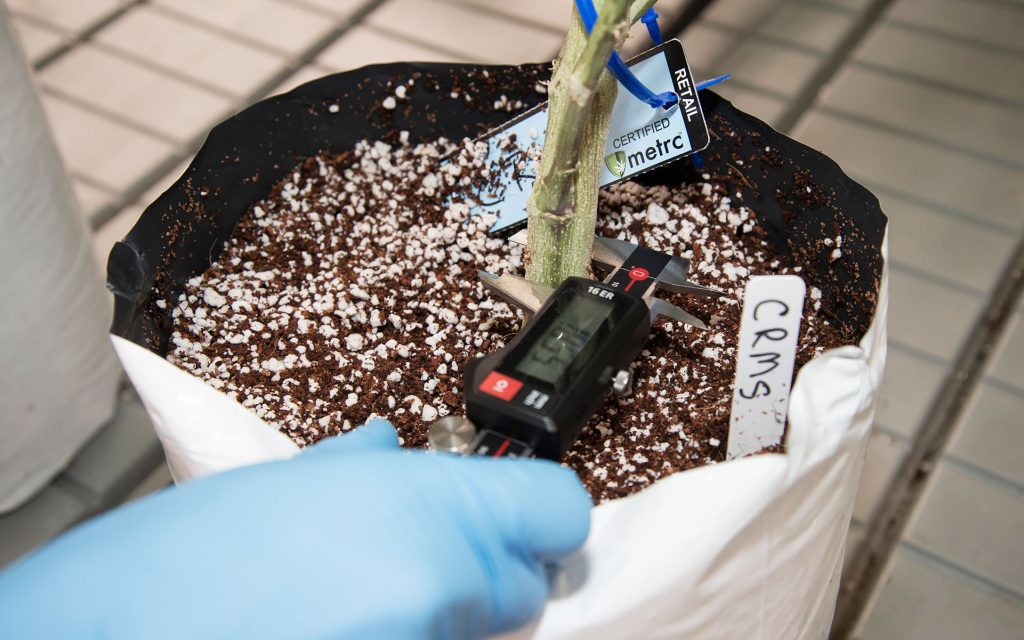
Media reports last week said “the majority of [growers] can’t pass the strict rules required by the state and therefore wouldn’t be able to get their product onto store shelves to open the market.” Those reports led to concerns that the state might face supply issues when its legal market opens by the end of this year.
There’s another rule change, too. In the old rules, lab staff sampled the crop scientifically. Usually by picking grams at random from a batch. Now, regulators will allow growers to pick their own samples—a blow to test validity.
“At this time, Conditional Licensees may conduct the sampling and transportation of cannabis products to laboratories for testing,” the OCM stated.
Stuck says these lax standards could set the whole industry up for failure. “If one company goes down” because moldy cannabis harms someone, it makes the whole industry look bad. She also rejects the excuse that outdoor is to blame. Stuck contends that Colorado has done a good job of adjusting to limits and hitting the required CFU numbers over the years, and that cultivators there and in other states have worked hard to meet the testing standards.
“My dream in this world is that cannabis products are just as safe as any wholesale food manufacturing product that is on the shelves.”
Kim Stuck
What’s causing moldy weed in New York?
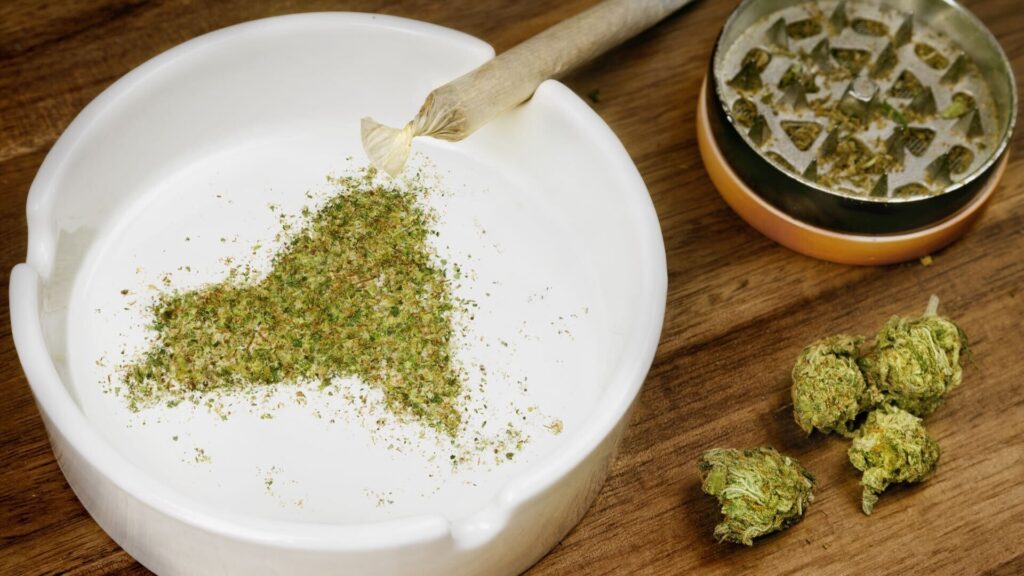
Stuck said that experience is the main cause of the moldy supply coming in, not climate or environmental causes. She said, “when you go from 40 plants in a basement to 40,000 plants in a controlled or outdoor environment” a learning curve is expected. “There’s a lot of really great growers out there that have been growing like 50 plants in a basement. And they just learned how to grow at scale. Or out-of-state people that are moving to a different climate. It takes time to tweak your entire crop,” Stuck explained.
Stuck added that New York regulators are “not reinventing the wheel.” And that there are a lot of states that have been online for years that have the same CFU limits in place.
“That’s why we have regulatory agencies,” Stuck said. “Businesses shouldn’t have to make that decision,” added. “They shouldn’t be put in the hot seat like that. They really should have the regulations be very clear about what they believe is safe and unsafe and only allow safe products to be sold to consumers.”
Do outdoor grows cause more mold than indoor?
Yes, cannabis that is grown outdoors in soil is more exposed to natural elements that can cause mold and yeast to form. That may be why regulators chose to loosen testing requirements.
Since the state required its first recreational growers to stay outdoor or use greenhouse cultivation with no more than 20 artificial lights, it would be illogical to punish farmers for higher levels of mold than indoor grows normally produce.
How does a state usually test for total mold, mildew and yeast?
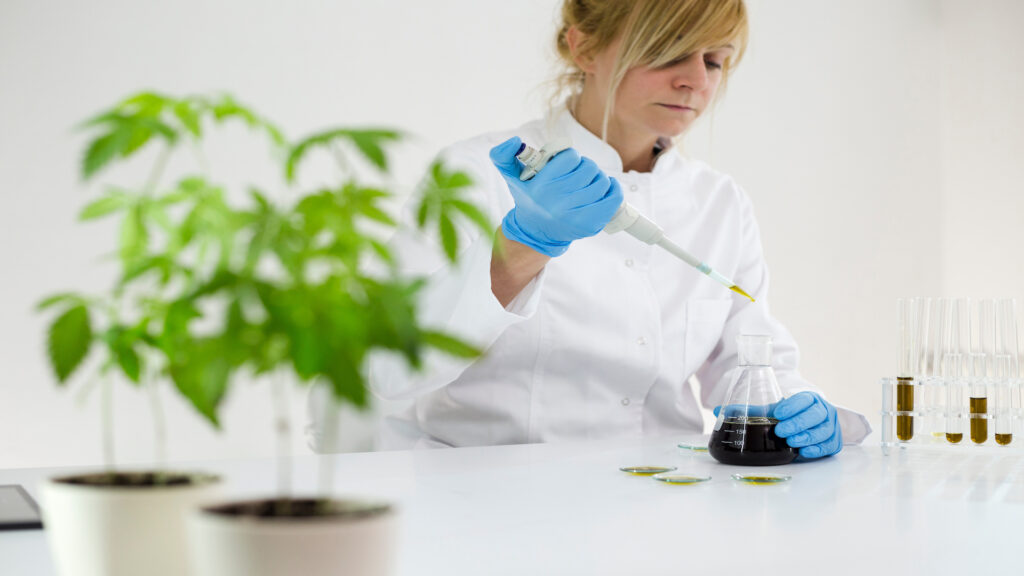
Lab staff randomly samples flower bud from a batch, grinds it up, and places it in an agar plate to encourage any mold, mildew or yeast to grow to detectable levels. If the agar plate does not culture mold beyond allowable levels, the lab passes the batch.
“Those assays have been around for years and years,” said Wurzer. “They cost about $20.”
Cannabis farmers can and do grow weed that passes total plate count safety tests. While everything has some microbiologicals on it, licensed cannabis farmers in the west consistently pass some of the toughest safety tests in the world.
“All they have to do is address some procedures,” Wurzer said. “It usually seems to come about during drying, curing, packaging where a product picks up these things.”
Most cannabis farmers in newly licensed states go through a period of failed lab tests, cleaning up their grows, and going on to passing tests. Colorado growers went through it in 2014 when medical regulations kicked in. California producers suffered through it in 2018, when testing hit bubble hash extracts extra-hard. Both states now have robust cannabis economies where all products pass safety tests.
Calvin Stovall and David Downs
Calvin Stovall is Leafly’s East Coast Editor. He’s an Atlanta-based writer, producer, and journalist whose work has appeared in Complex, HBO, XXL Magazine, and other publications.
David Downs directs news and lifestyle coverage as the California Bureau Chief for Leafly. He is the former cannabis editor of the San Francisco Chronicle, as well as the author of several cannabis books.
View Calvin Stovall and David Downs’s articles
By submitting this form, you will be subscribed to news and promotional emails from Leafly and you agree to Leafly’s Terms of Service and Privacy Policy. You can unsubscribe from Leafly email messages anytime.

Post a comment: